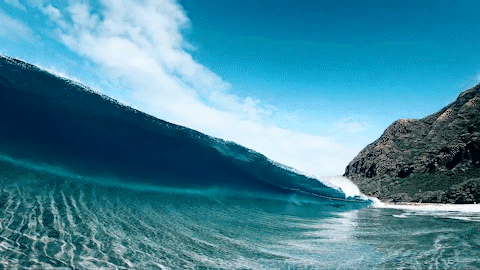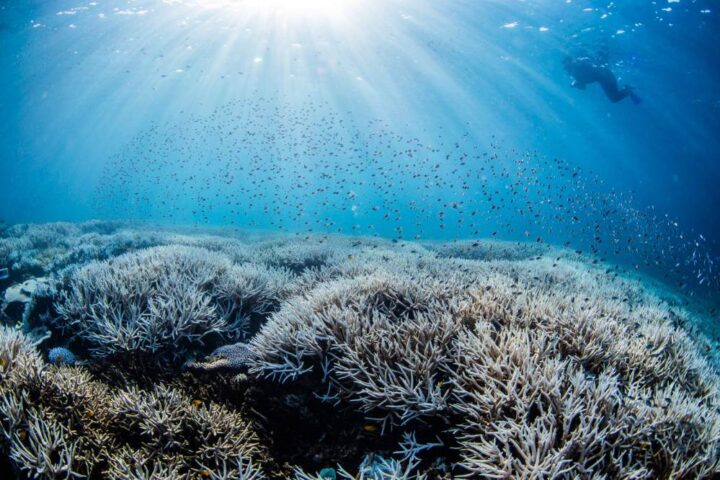The ocean absorbs the majority of the surplus energy that accumulates in the Earth system as a result of rising greenhouse gas concentrations. The extra energy warms the ocean, and the water’s subsequent thermal expansion causes sea-level rise, which is exacerbated by melting land ice. The ocean’s top layers have warmed faster than the deep layers, as evidenced by the rise in global mean sea-surface temperature and the increased frequency of marine heatwaves. As the amount of CO2 in the atmosphere rises, the amount of CO2 in the ocean rises as well. This has an impact on ocean chemistry, reducing the water’s average pH, a process known as ocean acidification. All of these changes have a wide variety of consequences.
Increased CO2 and other greenhouse gas emissions generate a positive radiative imbalance at the top of the atmosphere, known as the Earth energy imbalance (EEI), which leads to a build-up of energy in the form of heat in the Earth system, causing global warming. The ocean stores around 90% of the accumulated heat in the Earth system, which is quantified as ocean heat content (OHC). A positive EEI indicates that the Earth’s climate system is still responding to present forcing and that more warming will occur even if force does not rise. As a result, the amount of heat in the water continues to rise. Over the period 2006–2021 (1971–2021), ocean warming rates for the 0–2000 m depth layer (relative to the ocean surface) reached 1.0 (0.6) 0.1 W m-2.
The global mean sea level (GMSL) takes into account variations in several aspects of the climate system. The GMSL rose by 2.1 mm per year between 1993 and 2002, and by 4.5 mm per year between 2013 and 2021, an increase of a factor of two between the periods, largely owing to the rapid loss of ice mass from the ice sheets, as measured by high-precision altimeter satellites since the early 1990s. The GMSL achieved a new peak in 2021. Local variations in ocean heat content and salinity determine regional patterns of sea-level change. Over the previous 30 years of the altimetry period, the patterns of sea level trends have only slightly changed, and variations from one year to the next are minor.
Marine heatwaves (MHW) and marine cold spells (MCS) are protracted episodes of high heat or cold that impact the water, similar to heatwaves and cold spells on land. They can have a variety of effects on marine life and dependent populations. In 2021, MHWs had an average daily coverage of 13%, which is lower than the previous highs of 17% in 2016 and 16% in 2020. In all, 25% of the ocean surface saw at least one MCS in 2021, which is similar to the figure for 2020 (25%), but far less than the 1985 record of 35%. (63 percent).
According to the WMO, sea levels reached record highs last year after rising an average of 4.5 millimetres annually for about the previous ten years. This is primarily caused by the increased loss of ice mass from melting ice sheets and is more than double the pace observed between 1993 and 2002. The WMO cautioned that the sea level rise puts hundreds of millions of coastal residents at danger from stronger and more frequent storms and floods.
The WMO further verified that ocean pH levels had fallen to their lowest level in at least 26,000 years. Oceans’ ability to absorb carbon dioxide from the atmosphere decreases as they become more acidic.
Around 23% of anthropogenic CO2 emissions into the atmosphere is absorbed by the ocean. While this slows the increase in CO2 levels in the atmosphere, CO2 mixes with saltwater and lowers the pH of the ocean, causing ocean acidification. Ocean acidification puts organisms and ecosystem functions at risk, putting food security, tourism, and coastal protection at risk. Acidification at the local and regional levels has a significant impact on marine creatures and biological processes. While there are still gaps in global coverage, capacity development activities are improving many countries’ abilities to monitor, manage, and report data on ocean acidification, as seen by the expanding number of countries participating in data collecting for the SDG Indicator.


















